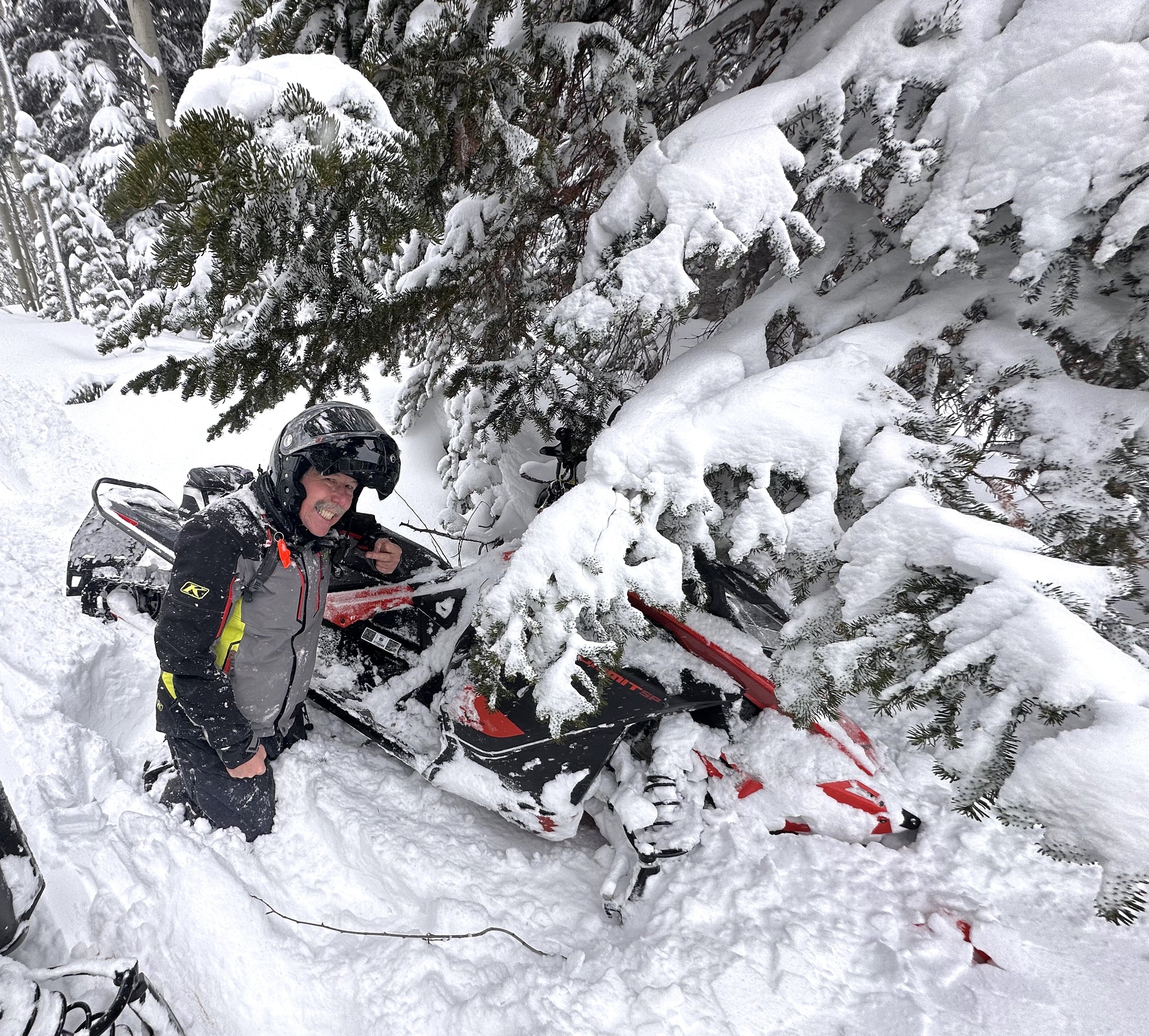
Our History
The Golden Spike Snowmobile Association was founded on December 9th, 1965 by Dr. Keith Stratford.
In January 1967, members adopted an emblem and gave their approval to have decals made for their snowmobiles.
In February 1969, GSSA officers started to attend the Utah Snowmobile Association's (USA) meetings. Additionally, Dr. Stratford held an officer position on the USA Board of Directors.
In December 1971, the "The Flurry" was created. The "Flurry" became the official publication and was used as a way to disseminate club news and information to members.
The 1990-1991 season marked the first of the monthly dinner meetings. The first dinner meeting was held at Jim's Family Restaurant on Washington Blvd. in Ogden, Utah.
Although technology has changed our way of life, GSSA really doesn't operate any different than it did in it's early years. We’re a group of fast friends who share a passion for riding and good company. Wanna come along?
Snowmobiling History
The Invention and Evolution of the Snowmobile
The concept of motorized over-snow vehicles dates back to the early 20th century. In 1924, Carl Eliason of Sayner, Wisconsin, built the first practical snowmobile. Eliason, an avid outdoorsman hindered by a foot disability, constructed a machine using bicycle parts, skis, and a 2.5-horsepower outboard motor. This invention laid the groundwork for future snowmobile designs.
In the 1930s, Joseph-Armand Bombardier, a Canadian inventor, made significant advancements by developing vehicles designed for snow-covered terrains. In 1937, he introduced the B7 snowmobile, an enclosed, seven-passenger vehicle primarily used for medical transport, mail delivery, and other essential services in rural Quebec. These early models were large and utilitarian, focusing on functionality over recreation.
The transition to recreational snowmobiling began in 1959 when Bombardier introduced the Ski-Doo, a smaller, open-cockpit vehicle designed for one or two passengers. This model made snowmobiling accessible to the general public, transforming it into a popular winter pastime. Over the decades, snowmobiles have evolved with technological advancements, incorporating lighter materials, more powerful and efficient engines, improved suspension systems, and modern safety features.
SOURCES: sayner-starlake.org | en.wikipedia.org
The History of Snowmobiling in the United States
Snowmobiling in the United States gained momentum in the late 1950s and early 1960s. Companies like Polaris Industries, founded in 1954 in Roseau, Minnesota, played a pivotal role in popularizing the sport. Polaris introduced its first snowmobile, the Polaris Sno Traveler, in 1957, catering to both utility and recreational markets.
The sport's popularity surged throughout the 1960s and 1970s, with numerous manufacturers entering the market. Snowmobile clubs and associations were established, promoting organized events, safety education, and trail development. Racing events and endurance challenges became common, further embedding snowmobiling into American winter culture. However, the 1973 oil crisis and subsequent economic recessions led to a consolidation in the industry, with many smaller manufacturers exiting the market.
Today, snowmobiling remains a popular winter activity in the United States, with well-established trail systems, clubs, and events across snowbelt regions. The industry continues to innovate, focusing on performance, safety, and environmental sustainability.
SOURCES: en.wikipedia.org
The History of Snowmobiling in Utah
In Utah, snowmobiling began to gain popularity in the 1960s and 1970s, coinciding with the national trend. The state's diverse mountainous terrain and reliable snowfall made it an ideal location for the sport. Early adopters used snowmobiles primarily for utilitarian purposes, such as accessing remote areas for ranching and rescue operations.
As recreational interest grew, Utah developed a robust snowmobiling infrastructure. The establishment of groomed trail systems in areas like the Uinta Mountains, Logan Canyon, and the Wasatch Range provided enthusiasts with reliable and scenic routes. The Utah Division of Parks and Recreation, in collaboration with local clubs and the U.S. Forest Service, played a significant role in trail development and maintenance.
Snowmobiling has also made a substantial economic impact in Utah. A study highlighted that snowmobiling contributes significantly to the state's economy, particularly benefiting rural communities through tourism and related industries.
Environmental considerations have become increasingly important in Utah's snowmobiling community. Organizations like Golden Spike Snowmobile Association and the Utah Snowmobile Association advocate for responsible riding practices, emphasizing the importance of preserving natural habitats and minimizing ecological impacts.
In summary, snowmobiling has evolved from a utilitarian necessity to a popular recreational activity, with Utah playing a significant role in its development. The state's commitment to trail development, safety, and environmental stewardship ensures that snowmobiling will continue to thrive for years to come.
SOURCE: stateparks.utah.gov
…
For those interested in exploring more about snowmobiling in the United States and worldwide, here are some additional valuable resources:
International Snowmobile Manufacturers Association (ISMA): Provides comprehensive information on snowmobile history, safety, and industry news.
American Council of Snowmobile Associations (ACSA): Focuses on national snowmobile issues, including advocacy, trail development, and safety education.
Snowmobile.com: Offers news, reviews, and articles related to snowmobiling across the globe.
Snowmobile Hall of Fame and Museum: Located in St. Germain, Wisconsin, this museum showcases the history and evolution of snowmobiling.

